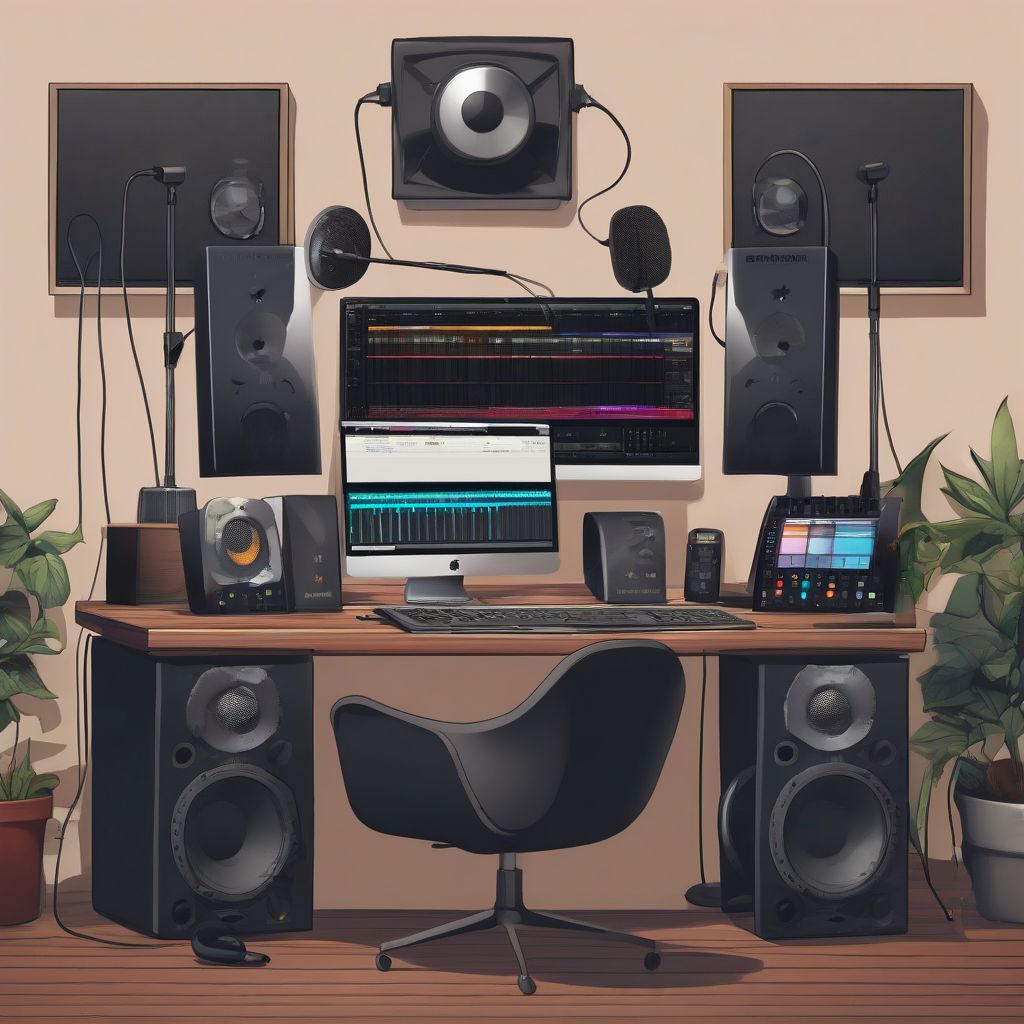Have you ever taken a bite of a dish that had all the right ingredients, but something just tasted…off? Just like a meal needs that perfect balance of flavors, your music needs mixing and mastering to truly shine. But don’t worry, you don’t need to be a Michelin-star chef to create a sonic masterpiece. Consider this your crash course in mixing and mastering basics for beginners, where we’ll break down complex concepts into bite-sized pieces.
What Exactly are Mixing and Mastering?
Think of mixing and mastering as the final steps in your music production journey. They take your raw audio tracks and transform them into a polished, professional-sounding final product. Here’s a simple analogy:
-
Mixing: Imagine preparing a multi-ingredient dish. Mixing is like combining those ingredients in the right proportions, seasoning them perfectly, and ensuring each element complements the others. In music, this involves adjusting levels, panning, EQ, compression, and adding effects to individual tracks.
-
Mastering: Now picture plating that delicious dish. Mastering is the final touch—that sprinkle of garnish or drizzle of sauce that elevates the presentation. It focuses on the overall sound of the song, enhancing its clarity, loudness, and sonic balance for different playback systems.
Essential Ingredients for Your Home Studio Setup
Before we dive into the techniques, let’s gather the necessary equipment. Don’t worry, you don’t need a fancy recording studio! Here’s a beginner-friendly setup:
-
Digital Audio Workstation (DAW): This is your command center, where you’ll record, edit, mix, and master your music. Popular options include GarageBand (free for Mac users), Ableton Live, Logic Pro (Mac only), and FL Studio.
-
Headphones: A good pair of studio headphones is crucial for accurate mixing. Look for headphones with a neutral sound signature, as they reproduce the sound without emphasizing any particular frequencies.
-
Studio Monitors: These are specialized speakers designed for accurate audio reproduction. While headphones are great for detail work, monitors give you a better sense of the stereo image and overall soundstage.
-
Audio Interface: This acts as the bridge between your instruments, microphone, and computer, ensuring high-quality audio recording and playback.
 Mixing and Mastering Setup
Mixing and Mastering Setup
Mixing: Seasoning Your Audio Tracks to Perfection
Mixing is where you shape the sonic landscape of your song. It’s all about creating balance, clarity, and depth in your mix. Let’s explore the key aspects:
1. Levels and Panning: Finding the Right Balance
-
Levels: Just like adjusting the volume knobs on your stereo, setting the appropriate levels for each track ensures no instrument overpowers another. The goal is to create a well-balanced mix where all elements can be heard clearly.
-
Panning: Imagine positioning instruments on a stage from left to right. Panning creates a sense of space and stereo width by placing sounds in different parts of the stereo field.
2. EQ: Sculpting Your Sound
EQ, or equalization, is like using a sonic scalpel to shape the frequency content of your tracks. It allows you to:
-
Clean up muddiness: Remove unwanted low frequencies that can make your mix sound boomy.
-
Boost presence and clarity: Emphasize certain frequencies to make vocals cut through the mix or add sparkle to guitars.
-
Create separation: Carve out space in the frequency spectrum so instruments don’t clash.
3. Compression: Taming the Dynamics
Compression is like an automatic volume control that evens out the loud and quiet parts of your audio. It helps:
-
Control dynamic range: Make loud peaks quieter and soft passages louder, resulting in a more balanced and powerful sound.
-
Add punch and sustain: Enhance the impact of drums or make guitars sustain longer.
-
Glue tracks together: Create a sense of cohesion and unity between different instruments.
4. Effects: Adding Depth and Dimension
Effects are like spices—use them subtly to enhance the flavor of your mix. Some commonly used effects include:
-
Reverb: Simulates the sound of different spaces, adding depth and ambiance.
-
Delay: Creates rhythmic repeats, adding space and movement to your tracks.
-
Chorus: Makes instruments sound fuller and wider by adding multiple, slightly detuned copies of the original signal.
Mastering: The Final Polish for a Professional Shine
Mastering is the art of taking your well-mixed song and making it sound amazing on any playback system. It involves:
1. Equalization and Compression: Fine-Tuning the Balance
-
Master EQ: Subtle EQ adjustments can enhance the overall tonal balance and clarity of your mix.
-
Master Compression: Gentle compression can glue your mix together, increase perceived loudness, and control dynamic range.
2. Stereo Enhancement: Widening the Soundstage
Stereo enhancement techniques can create a wider, more immersive listening experience by manipulating the stereo image.
3. Limiting: Achieving Competitive Loudness
Limiting is the final stage of mastering, where you bring your song up to commercial loudness levels without introducing distortion. It’s like putting a ceiling on the overall volume of your track.
From Beginner to Audiophile: Tips for Success
-
Start Simple: Don’t get overwhelmed! Focus on one mixing or mastering concept at a time and gradually incorporate new techniques.
-
Train Your Ears: Listen to your favorite songs critically and analyze how they were mixed and mastered. Pay attention to the balance, clarity, and overall sound.
-
Reference Tracks: Use commercially released songs in your genre as a reference point to compare your mix against. This helps you identify areas for improvement.
-
Don’t Be Afraid to Experiment: Mixing and mastering are creative processes. Try different techniques, plugins, and settings to find what sounds best to you.
-
Seek Feedback: Share your mixes with fellow musicians or online communities for constructive criticism. Fresh ears can provide valuable insights.
Conclusion: Serve Up Your Sonic Masterpiece!
Mastering the basics of mixing and mastering is an ongoing journey, but with practice and experimentation, you can transform your raw recordings into professional-sounding tracks. Remember, these are just the foundational elements; the true magic happens when you combine your technical skills with your creative vision. So, put on your chef’s hat, fire up your DAW, and get ready to serve up a sonic feast for the world to enjoy!
[amazon bestseller=”mixing and mastering”]
